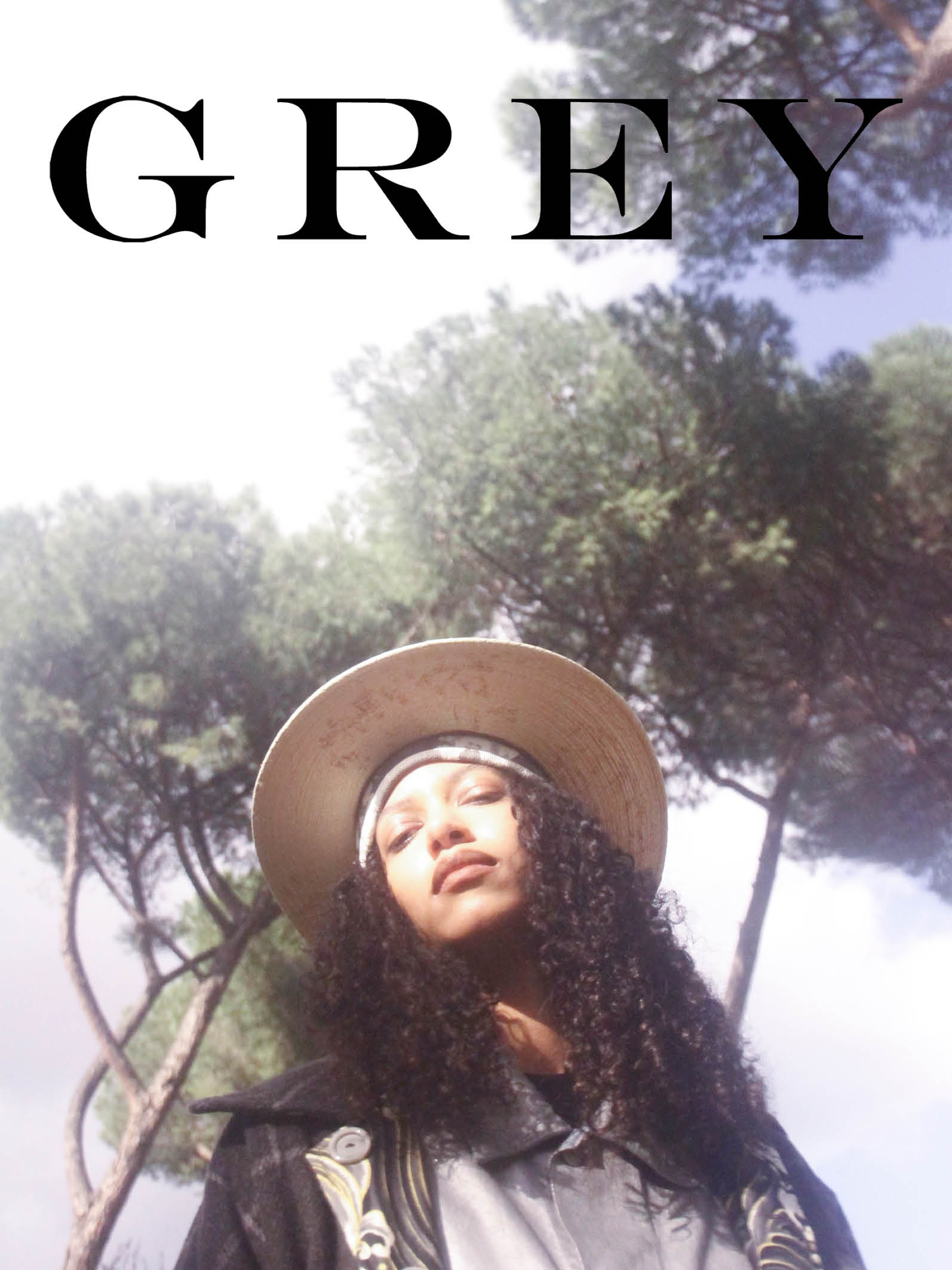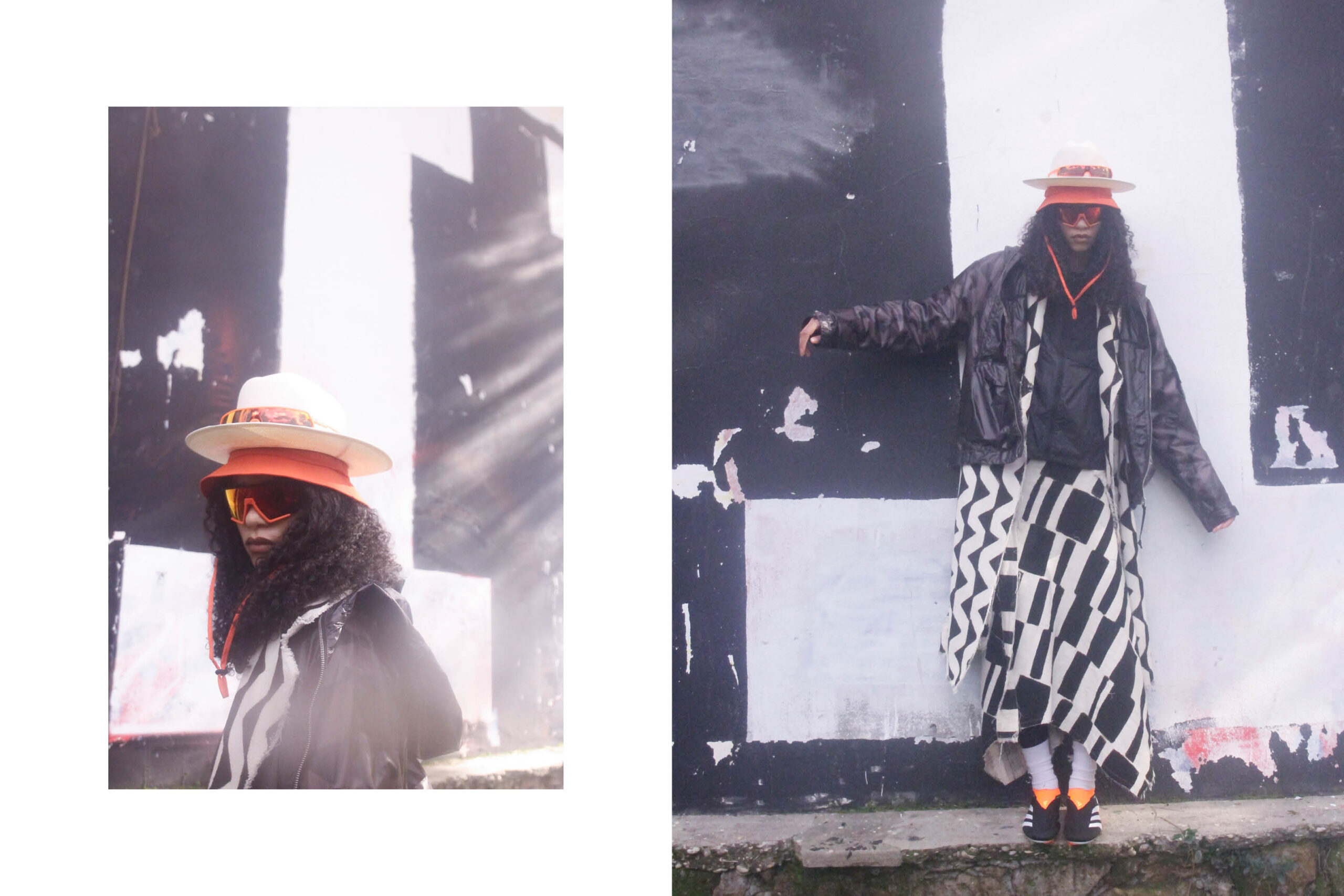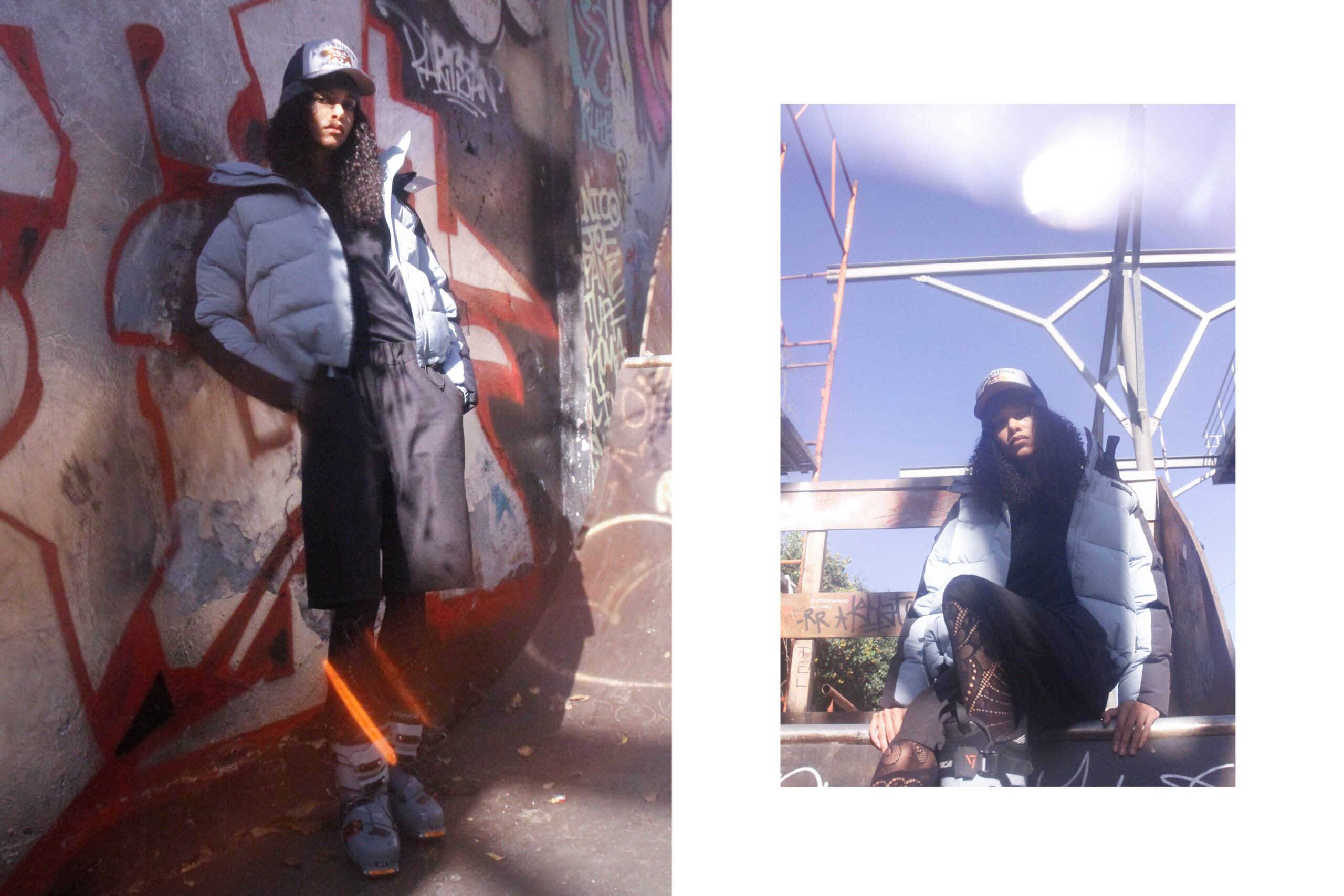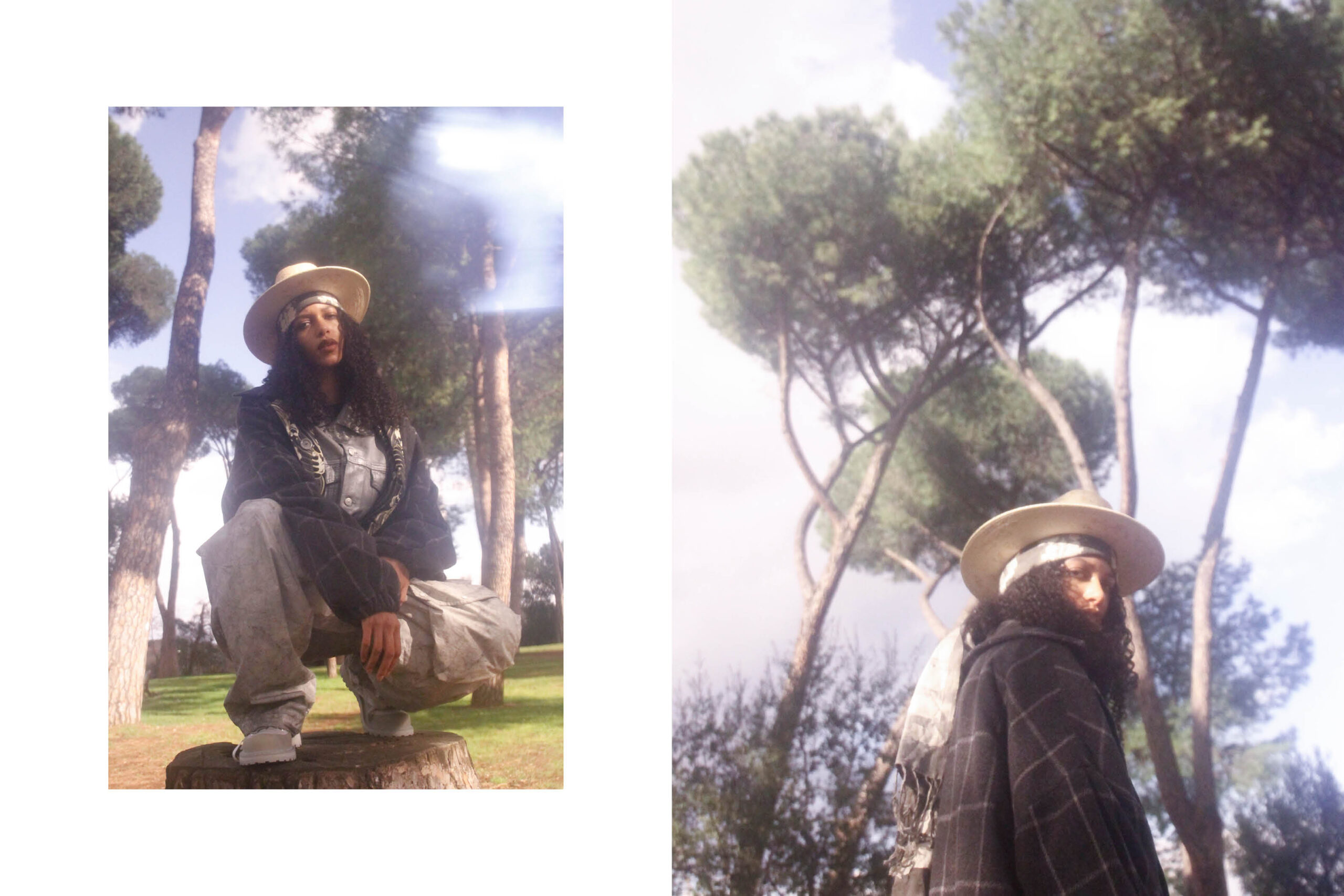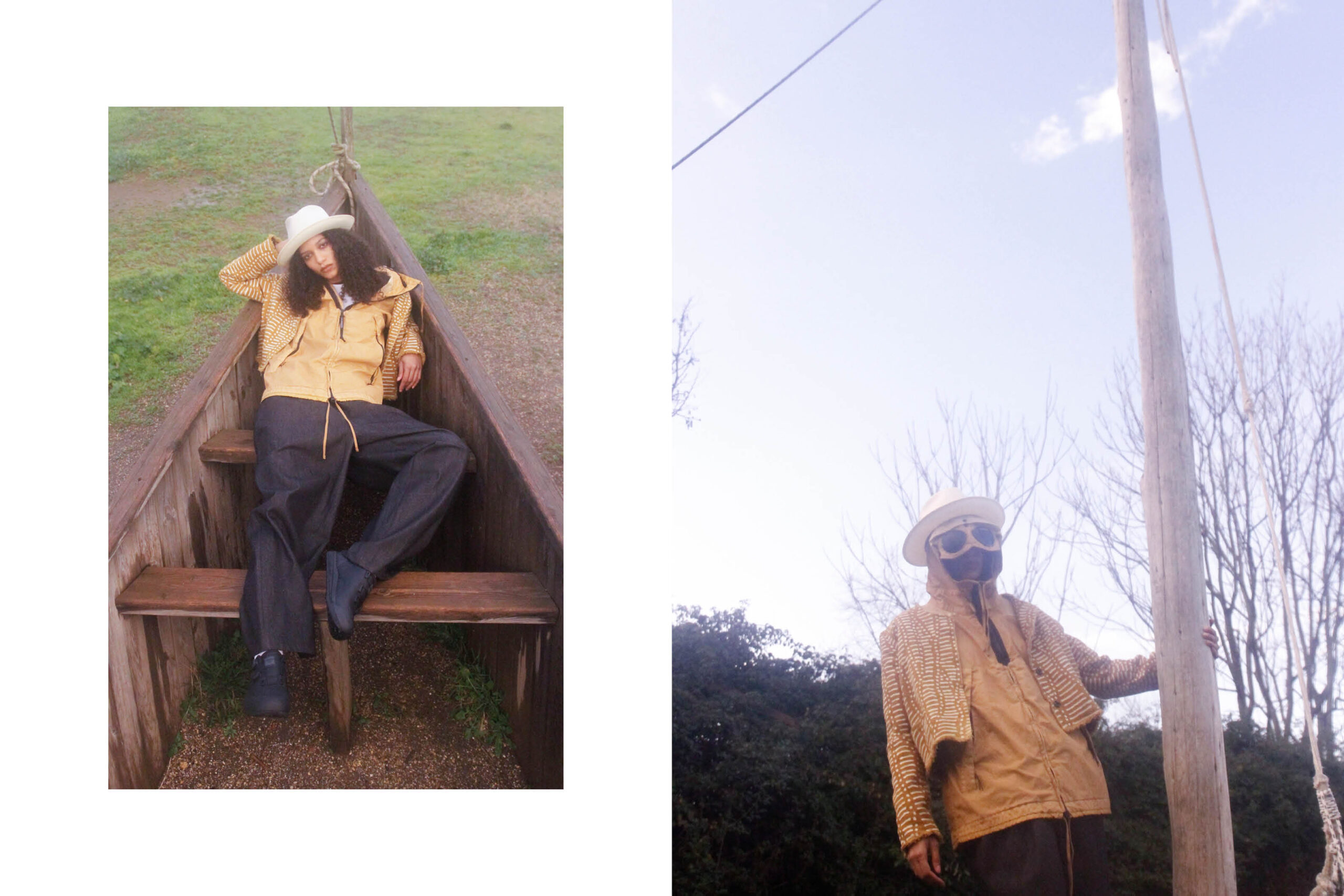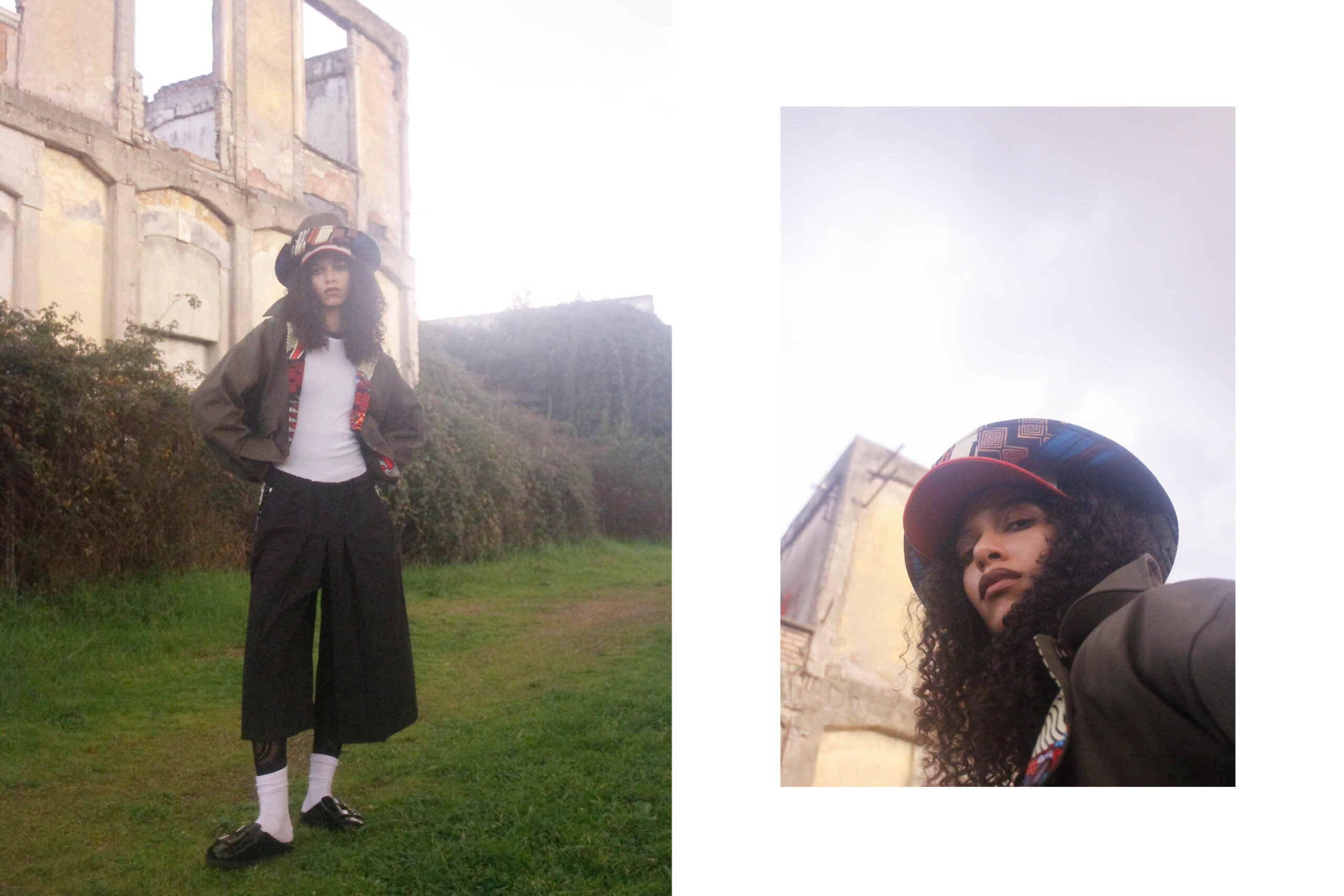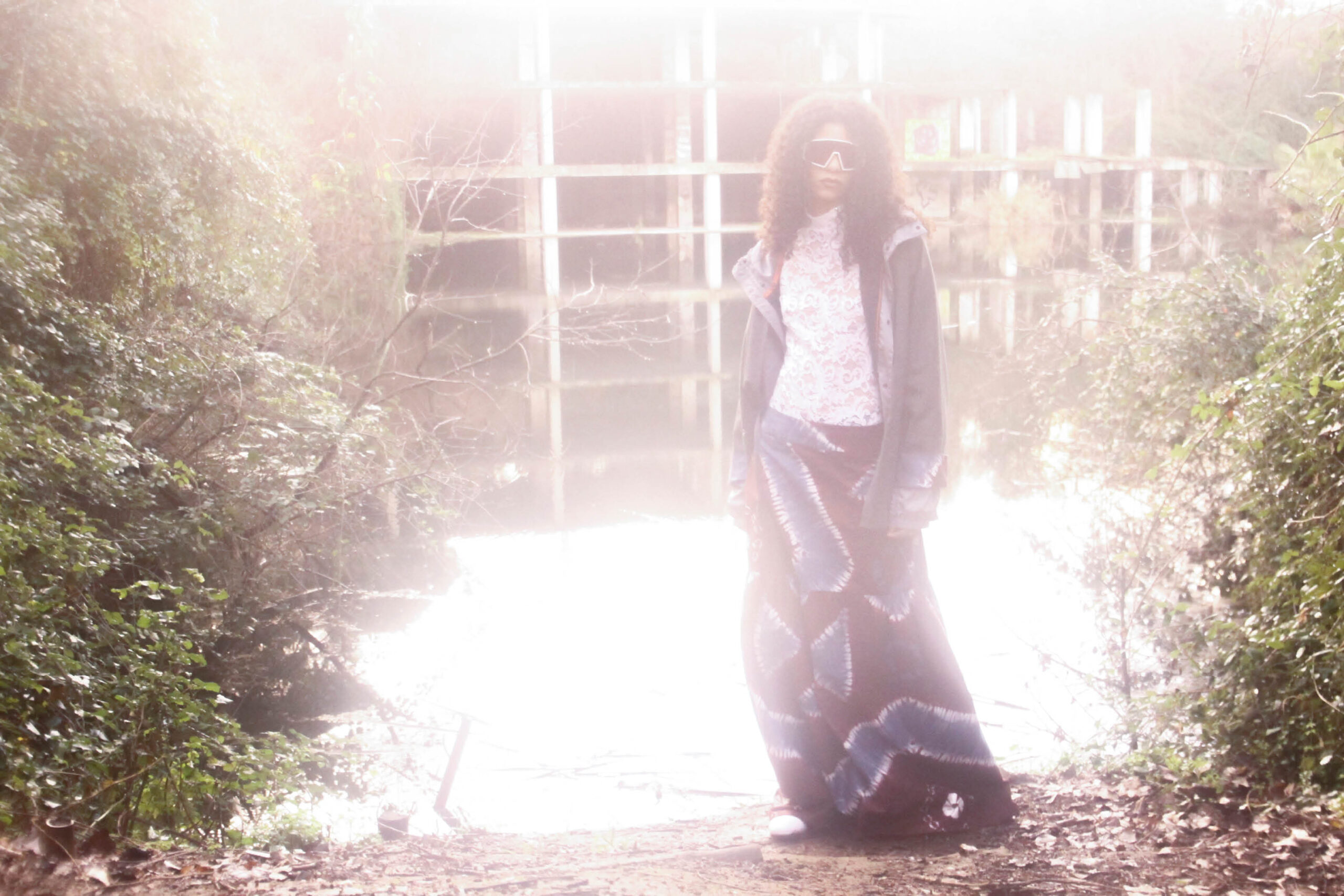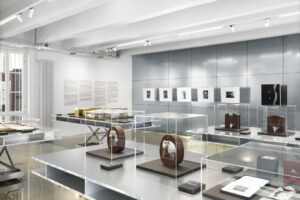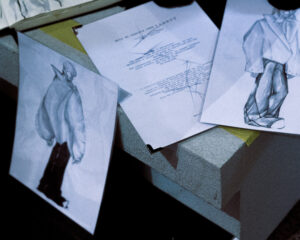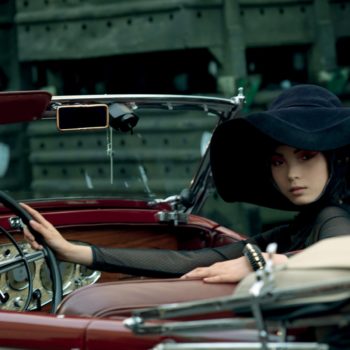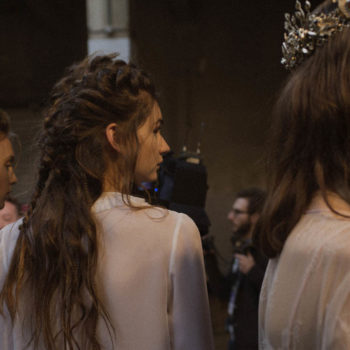Photography Leonardo Casalini
Stylist Sara Danese
Words Alessio de Navasques
Model Anna Virag @ Brave Models
Makeup & Hair Clara Spadoni
Stylist assistants Andrea Ciccarella, Ludovica Bonci del Bene, Gaia Caponera
Editor-in-chief Valentina Ilardi
Heritage is a GREY project that gives voice to the far-sighted fashion generation of designers and emerging brands that are just establishing themselves in the contemporary scene.
For the 8th edition of Heritage, we are proudly presenting COLORIAGE, that bridges cultures through fashion, uniting artisans from Africa, Bangladesh, Eastern Europe, and beyond. By showcasing the creative talents of refugees and migrants, Coloriage integrates diverse techniques and fabrics with Western tailoring, fostering integration and celebrating multicultural narratives. Born as both a social initiative and an experimental endeavor, Coloriage pioneers intercultural fashion, promoting diversity and creativity in the industry.
Fashion understood as an encounter between cultures, primarily from Africa but also from Bangladesh or Eastern Europe, and the cultural heritage of refugee and asylum-seeking tailors who are part of the cooperative: how did the Coloriage project come about and how does it succeed in uniting such diverse souls?
VK: Coloriage currently employs 5 artisans from various West African countries, 2 from Bangladesh, and 1 from Ukraine. The idea behind the project is to valorize the creative and artisanal know-how of refugees and migrants, who often struggle to find qualified work here in Italy. This is achieved by intertwining the techniques and fabrics of their countries with those of Western tailoring and fashion, merging their stories with ours. Coloriage was not only born as a social project to promote the integration of designers and artisans from low-income countries, but also as an experimental project, a melting pot of creativity, to promote a new intercultural fashion.
The geometric ensemble by COLORIAGE is composed of a black and white kimono coat and a long wrap-skirt. The sheer rain jacket by CP COMPANY is layered over it. ADIDAS leans in the look with a black windbreaker, striped soccer boots and two pairs of sunglasses. A rafia hat and bright orange bucket-hat by STETSON complete the look.
Research trips that connect the vibrant reality of the Testaccio “Villagio Globale”, home to the tailoring workshop, with fabric production ateliers in Mali or other parts of Africa: how does the journey as intercultural exploration become an approach, a way of seeing fashion for Coloriage?
VK: The theme of travel is ingrained in the DNA of our project. One might even describe Coloriage as the nexus where diverse journeys converge – from Italy to Africa, where our fabrics are meticulously woven and dyed, and from Africa or Asia to Europe, some undertaken to escape challenging circumstances, while others simply driven by a yearning for exploration and connection. We owe a debt of gratitude to Villaggio Globale, a large co-working space for artists and artisans nestled in the Testaccio area. It provided us with our initial space, where these journeys could intersect, intertwine, and come together. It was within this space that the Coloriage social tailoring workshop was born, with its ethos of intercultural fusion.
Besides being a collection project, Coloriage is also an educational project: how do these two aspects integrate, and to what extent does this aspect also define the collection?
VK: This is a crucial point. Understanding Coloriage is difficult without considering how the brand stems from an educational project aimed at providing excellent training to migrant individuals with a creative or artisanal background but lacking the means to pursue a course of study here in Italy. From the outset, we involved teachers from Fashion Academies and Universities, who became passionate about the project and accompanied the students through a study path in garment construction, pattern making, and design. This was facilitated by intensive workshops such as the Fashion Design course by Anthony Knight from Iuav Venice, which we hold regularly. The professional level achieved by the students through this path enabled Coloriage to evolve into an enterprise, where today, the first 8 students of the school work. The educational initiative commenced in 2019, and currently, we have agreements with centers and NGOs in our territory that assist refugees. Every 6 months, we welcome 3 new students. Though, even former students who now work with us continue to participate in courses and workshops. In this sense, what we are experimenting with is an integrated circular model of training and employment. As you can imagine, for a startup like ours, continuously investing in training poses challenges. During intensive courses, production may halt for one or two weeks. However, it is this aspect that facilitates our growth and imbues us with an experimental character. New collections often originate from pattern making and fashion design courses, in collaboration with invited teachers, designers, and artists. In this case, we cannot speak of a fashion collection in the traditional sense: Coloriage is an open project, nourished by the perpetual exchange among people, cultures, and diverse inspirations.
The paint-brushed fedora hat by STETSON shows off a knot-tied head scarf, matching the lining of a checkered flannel bomber jacket, both by COLORIAGE. The denim silver-coated over-shirt by CYCLE complements the marble tie-dye cargo pants by TEN C opening up on the boots, made in collaboration with DIEMME.
Dark shadows frame this look composed by a half-zipped sweater by THE NORTH FACE worn under a sleeveless printed coat and matching palazzo pants, both by COLORIAGE. The mask-shaped frame sunglasses by GUCCI are crowned by a fuzzy beanie by BARTS topped with a fedora hat by STETSON. Fluorescent running shoes by PUMA finish the outfit.
How do the stories and expertise of the tailors, along with their unique experiences, shape and define the Coloriage collection? Furthermore, what processes are employed to craft the brand’s storytelling and identity?
VK: Coloriage comprises a multicultural team; each member brings significant background experiences of travel or migration, extending beyond just the involvement of refugee individuals. In my case, for instance, I completed my studies in Paris and am married in Mali, where a part of my family resides. Anthony Knight is English of Jamaican origin but has been living in Venice for years. This multicultural background is reflected in our collections, which seamlessly blend fabrics and styles from diverse cultures. We continually strive to intertwine, blend, and hybridize different cultural influences.Reversibility of garments is one of the leitmotifs of our collections, where this intercultural and multifaceted soul emerges. Jackets, skirts, hats, and kimonos can be worn on one side, crafted from wool, linen, or velvet (recovered from valuable unsold stocks of Italian companies), or on the other side, featuring African wax fabric. The connection to the handcraft of West Africa, from where many artisans in our workshop come, is another common thread of the collections. Drawing inspiration from local tailoring practices, we incorporate techniques such as assembling scraps from production to create new fabrics, a concept beautifully reinterpreted in our “Mosaics” line. Or again in our “Handwoven” line, we showcase fabrics handcrafted and handpainted in Mali. We aim to highlight the magical symbolism imbued within these fabrics, in Mali they are revered as true ritual objects, celebrating their cultural heritage and craftsmanship. One consistent theme in our storytelling is sustainability, which permeates all the collections mentioned. Whether it’s through the circular economy approach of recovering unsold fabric stocks, the use of natural fabrics in production, or upcycling techniques, sustainability is at thefore front of our design ethos. Currently, we are working on a new line of vintage shirts adorned with scraps of African fabrics using the Japanese sashiko technique, further demonstrating our commitment to sustainability and intercultural fashion.
How many tailors make up the workshop, and how is the production process organized to achieve a tailored yet competitive product?
VK: The 8 migrant artisans working with us in their countries of origin have been trained in bespoke tailoring, a practice much more prevalent in Africa than pret-à-porter. They possess the ability to cut fabric without the need for a pattern, which is unthinkable here. At Coloriage, they have learned Western techniques, resulting in impeccable finishing on our products, which has become integral to the success of our project. However, our teachers frequently uncover innovative techniques or tailoring tricks while working alongside them, accelerating production without compromising the garment’s perfection. In this sense, there is an intercultural dialogue within our school. Another crucial point is our circular economy initiative. It involves reclaiming unsold Italian fabric stocks, including wools, cashmere, velvets, and linens. By repurposing these materials, we are able to offer high-quality garments with contemporary and intercultural designs at competitive prices in the market.
Ancient ruins serve as a backdrop for this hard-shaped look, composed of a military-green reversible bomber jacket and its matching hat, paired to a pleated skort, all by COLORIAGE. A white tank top by WOLFORD matches the socks, worn over woven leggings by VI VALENTINA ILARDI and styled with black BIRKENSTOCKS 1774, of course. The trucker-hat peeping out is by STETSON.
Besides the workshop in Testaccio, there is also a space in Trastevere on Via della Lungaretta, which, in addition to being a store, is a place open to travel and exchange: how did the idea of a street-facing venue come about, and are you considering opening more?
VK: Until the end of 2022, production at the Villagio Globale occurred behind closed doors. The opening of our space in Trastevere marked a significant milestone: not only did it become an open-door workshop and a store in the historic center of Rome, but it also became a hub for promoting inclusive, circular, experimental, and intercultural fashion. Visitors can actively participate in workshops, attend talks, and consult fashion literature. Even outside of scheduled events, there will always be someone available to share information about the project and the collections available in the store. Furthermore, garments can be customized on the spot thanks to the live work of our tailors. Customers can also choose different fabrics to create a unique piece for themselves. Regarding expansion plans, Coloriage’s primary objective is the employment of vulnerable individuals. Therefore, we are indeed seeking new distribution agreements, both within Italy and abroad, and we may consider opening additional stores in Italy to accommodate a growing number of people within our enterprise.

